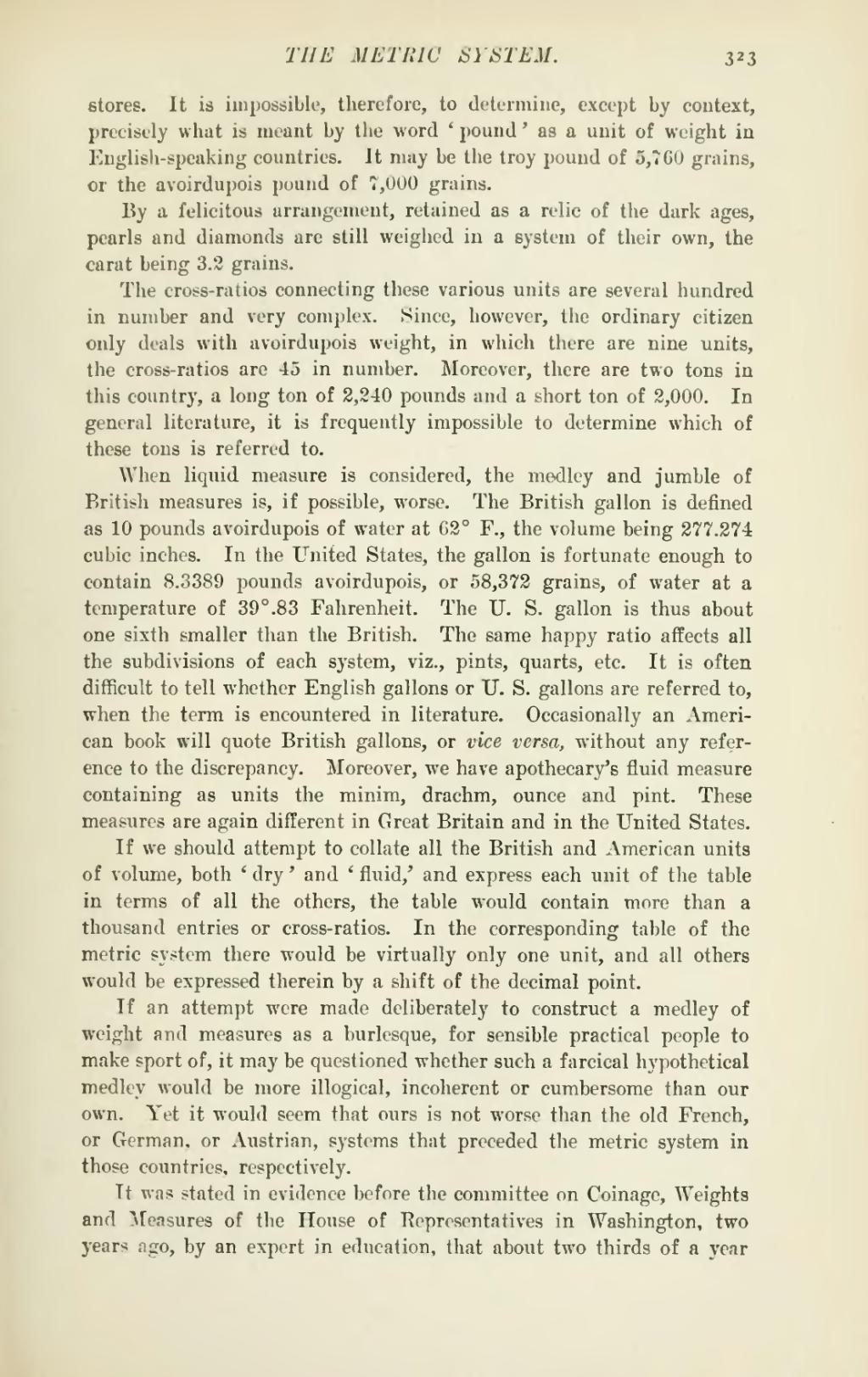stores. It is impossible, therefore, to determine, except by context, precisely what is meant by the word 'pound' as a unit of weight in English-speaking countries. It may be the troy pound of 5,760 grains, or the avoirdupois pound of 7,000 grains.
By a felicitous arrangement, retained as a relic of the dark ages, pearls and diamonds are still weighed in a system of their own, the carat being 3.2 grains.
The cross-ratios connecting these various units are several hundred in number and very complex. Since, however, the ordinary citizen only deals with avoirdupois weight, in which there are nine units, the cross-ratios are 45 in number. Moreover, there are two tons in this country, a long ton of 2,240 pounds and a short ton of 2,000. In general literature, it is frequently impossible to determine which of these tons is referred to.
When liquid measure is considered, the medley and jumble of British measures is, if possible, worse. The British gallon is defined as 10 pounds avoirdupois of water at 62° F., the volume being 277.274 cubic inches. In the United States, the gallon is fortunate enough to contain 8.3389 pounds avoirdupois, or 58,372 grains, of water at a temperature of 39°.83 Fahrenheit. The IT. S. gallon is thus about one sixth smaller than the British. The same happy ratio affects all the subdivisions of each system, viz., pints, quarts, etc. It is often difficult to tell whether English gallons or U. S. gallons are referred to, when the term is encountered in literature. Occasionally an American book will quote British gallons, or vice versa, without any reference to the discrepancy. Moreover, we have apothecary's fluid measure containing as units the minim, drachm, ounce and pint. These measures are again different in Great Britain and in the United States.
If we should attempt to collate all the British and American units of volume, both 'dry' and 'fluid' and express each unit of the table in terms of all the others, the table would contain more than a thousand entries or cross-ratios. In the corresponding table of the metric system there would be virtually only one unit, and all others would be expressed therein by a shift of the decimal point.
If an attempt were made deliberately to construct a medley of weight and measures as a burlesque, for sensible practical people to make sport of, it may be questioned whether such a farcical hypothetical medley would be more illogical, incoherent or cumbersome than our own. Yet it would seem that ours is not worse than the old French, or German, or Austrian, systems that preceded the metric system in those countries, respectively.
It was stated in evidence before the committee on Coinage, Weights and Measures of the House of Representatives in Washington, two years ago, by an expert in education, that about two thirds of a year
